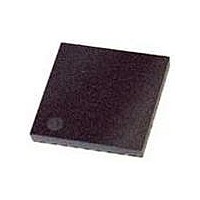ATMEGA32M1-15MD Atmel, ATMEGA32M1-15MD Datasheet - Page 10

ATMEGA32M1-15MD
Manufacturer Part Number
ATMEGA32M1-15MD
Description
MCU AVR 32K FLASH 15MHZ 32-QFN
Manufacturer
Atmel
Series
AVR® ATmegar
Datasheet
1.ATMEGA32M1-15MD.pdf
(25 pages)
Specifications of ATMEGA32M1-15MD
Package / Case
32-VQFN
Voltage - Supply (vcc/vdd)
2.7 V ~ 5.5 V
Operating Temperature
-40°C ~ 150°C
Speed
16MHz
Eeprom Size
1K x 8
Core Processor
AVR
Program Memory Type
FLASH
Ram Size
2K x 8
Program Memory Size
32KB (32K x 8)
Data Converters
A/D 11x10b; D/A 1x10b
Oscillator Type
Internal
Peripherals
Brown-out Detect/Reset, POR, PWM, Temp Sensor, WDT
Connectivity
CAN, LIN, SPI, UART/USART
Core Size
8-Bit
Processor Series
ATMEGA32x
Core
AVR8
Data Bus Width
8 bit
Data Ram Size
2 KB
Mounting Style
SMD/SMT
3rd Party Development Tools
EWAVR, EWAVR-BL
Development Tools By Supplier
ATAVRDRAGON, ATSTK500, ATSTK600, ATAVRISP2, ATAVRONEKIT, ATA6834-DK, ATADAPCAN01
Lead Free Status / RoHS Status
Lead free / RoHS Compliant
Number Of I /o
-
Lead Free Status / Rohs Status
Details
2.3.3
2.3.4
2.3.5
2.3.6
7647DS–AVR–08/08
Port B (PB7..PB0)
Port C (PC7..PC0)
Port D (PD7..PD0)
Port E (PE2..0) RESET/ XTAL1/
XTAL2
Port B is an 8-bit bi-directional I/O port with internal pull-up resistors (selected for each bit). The
Port B output buffers have symmetrical drive characteristics with both high sink and source
capability. As inputs, Port B pins that are externally pulled low will source current if the pull-up
resistors are activated. The Port B pins are tri-stated when a reset condition becomes active,
even if the clock is not running.
Port B also serves the functions of various special features of the ATmega16/32/64/M1/C1 as
listed on
Port C is an 8-bit bi-directional I/O port with internal pull-up resistors (selected for each bit). The
Port C output buffers have symmetrical drive characteristics with both high sink and source
capability. As inputs, Port C pins that are externally pulled low will source current if the pull-up
resistors are activated. The Port C pins are tri-stated when a reset condition becomes active,
even if the clock is not running.
Port C also serves the functions of special features of the ATmega16/32/64/M1/C1 as listed on
page
Port D is an 8-bit bi-directional I/O port with internal pull-up resistors (selected for each bit). The
Port D output buffers have symmetrical drive characteristics with both high sink and source
capability. As inputs, Port D pins that are externally pulled low will source current if the pull-up
resistors are activated. The Port D pins are tri-stated when a reset condition becomes active,
even if the clock is not running.
Port D also serves the functions of various special features of the ATmega16/32/64/M1/C1 as
listed on
Port E is an 3-bit bi-directional I/O port with internal pull-up resistors (selected for each bit). The
Port E output buffers have symmetrical drive characteristics with both high sink and source
capability. As inputs, Port E pins that are externally pulled low will source current if the pull-up
resistors are activated. The Port E pins are tri-stated when a reset condition becomes active,
even if the clock is not running.
If the RSTDISBL Fuse is programmed, PE0 is used as an I/O pin. Note that the electrical char-
acteristics of PE0 differ from those of the other pins of Port E.
If the RSTDISBL Fuse is unprogrammed, PE0 is used as a Reset input. A low level on this pin
for longer than the minimum pulse length will generate a Reset, even if the clock is not running.
The minimum pulse length is given in
to generate a Reset.
Depending on the clock selection fuse settings, PE1 can be used as input to the inverting Oscil-
lator amplifier and input to the internal clock operating circuit.
Depending on the clock selection fuse settings, PE2 can be used as output from the inverting
Oscillator amplifier.
72.
page
page
68.
75.
Table 7-1 on page
ATmega16/32/64/M1/C1
46. Shorter pulses are not guaranteed
11















